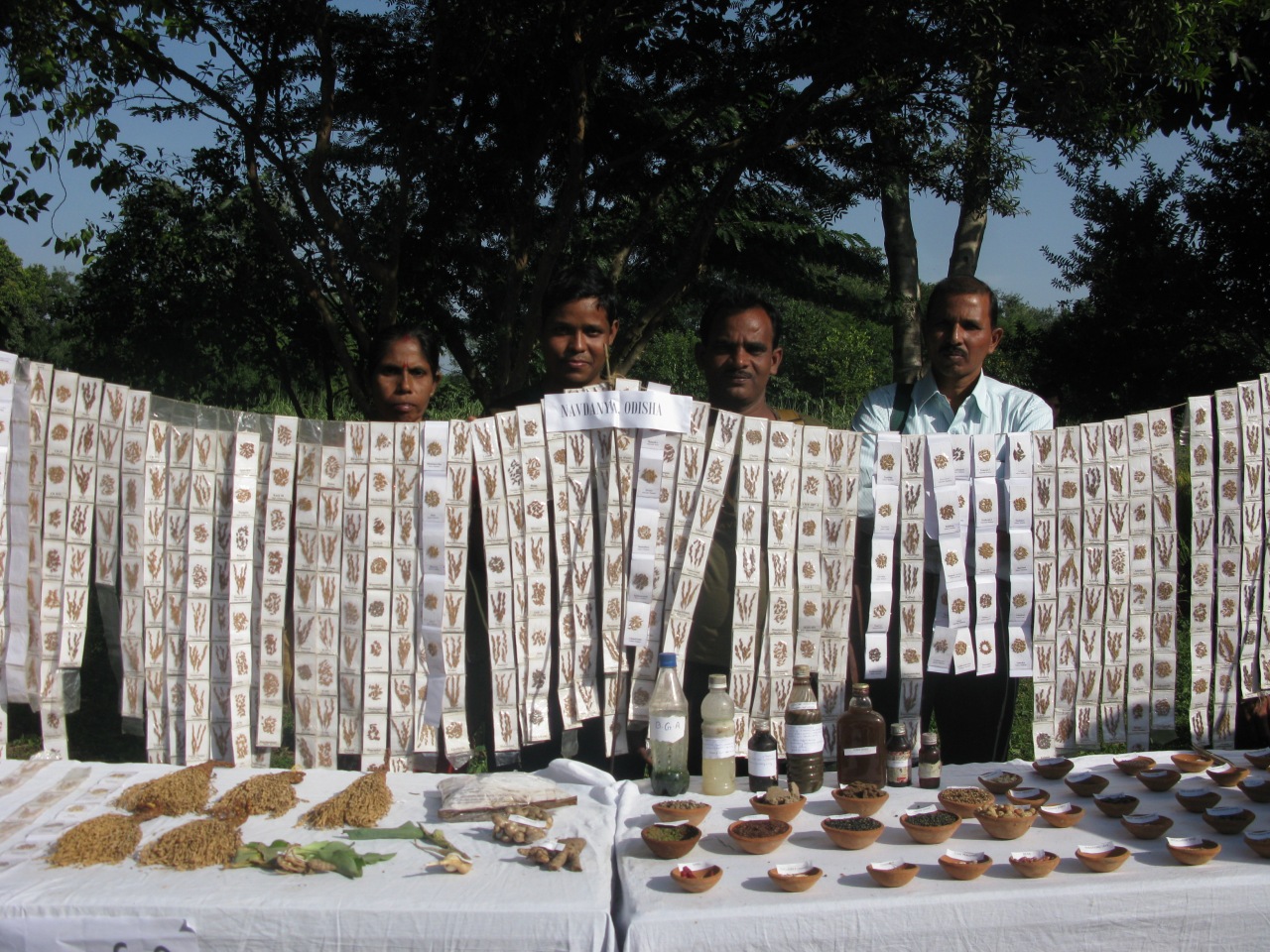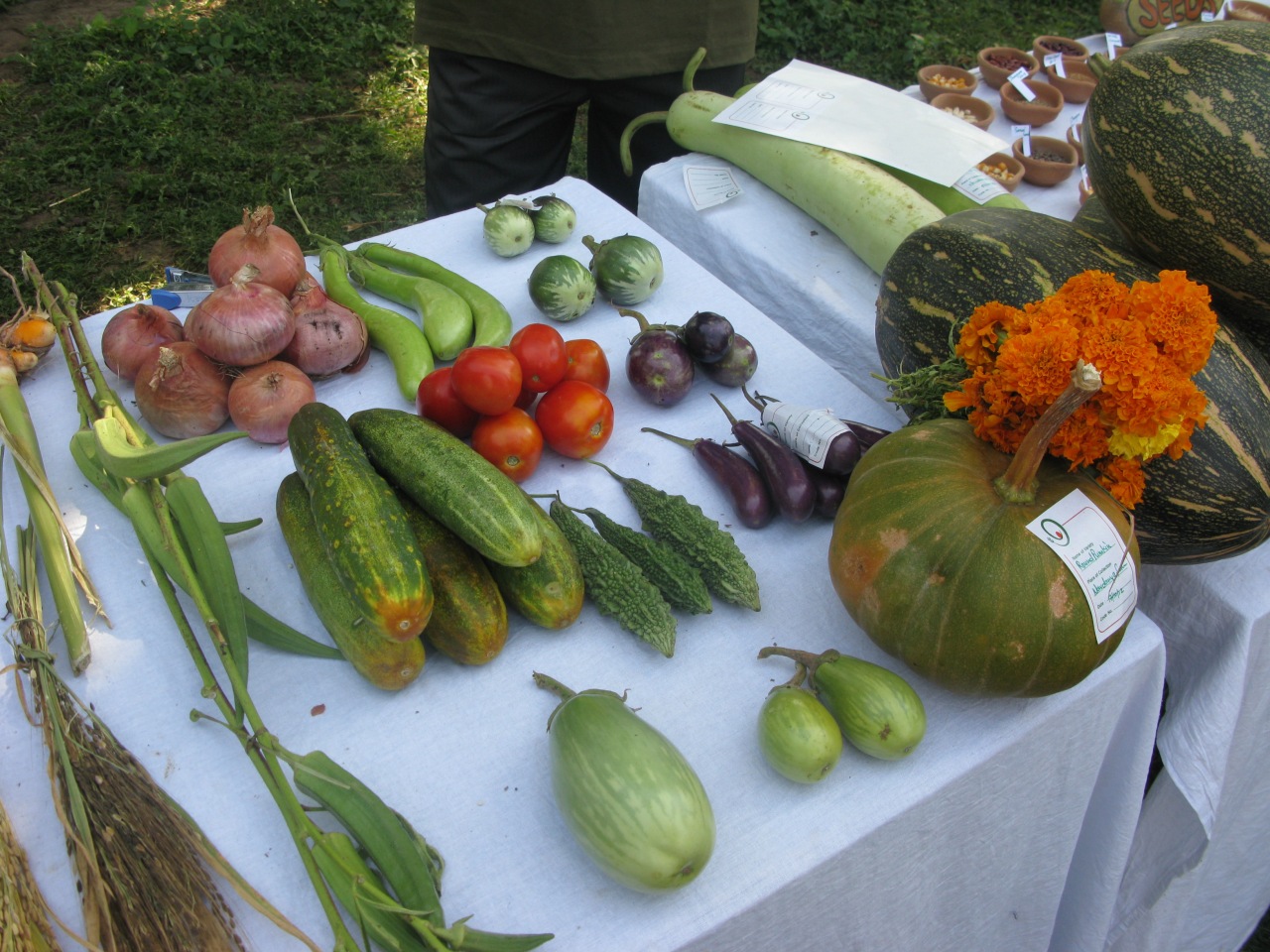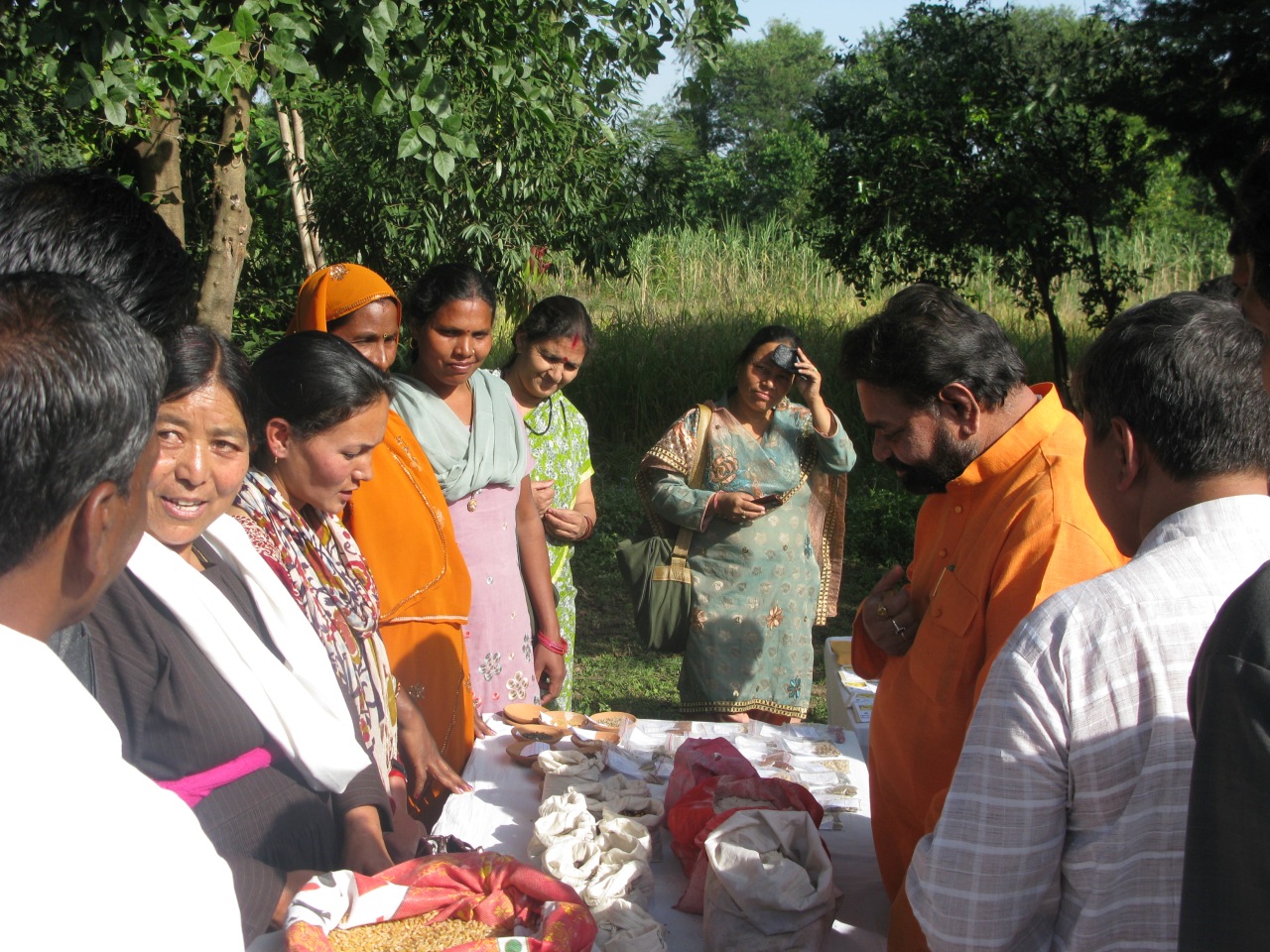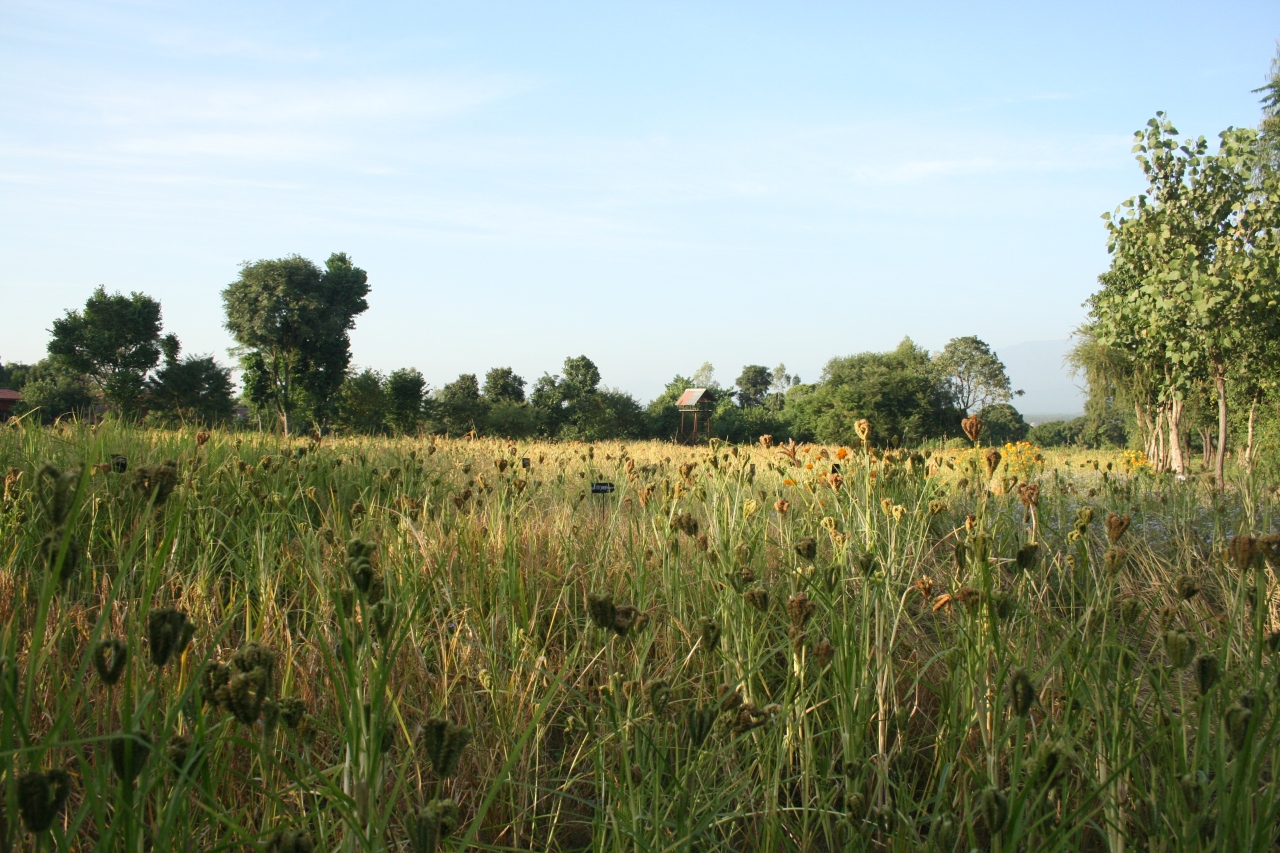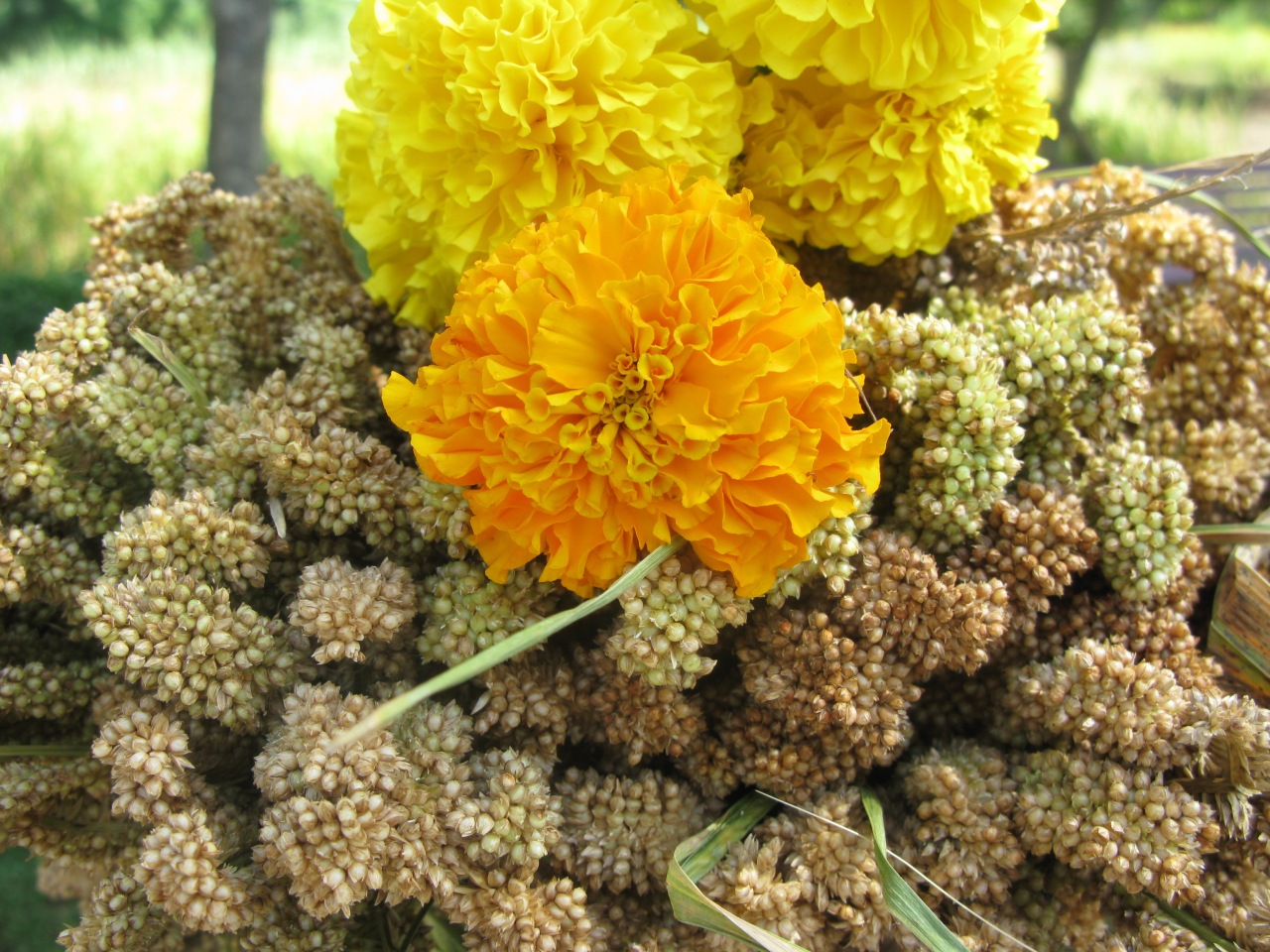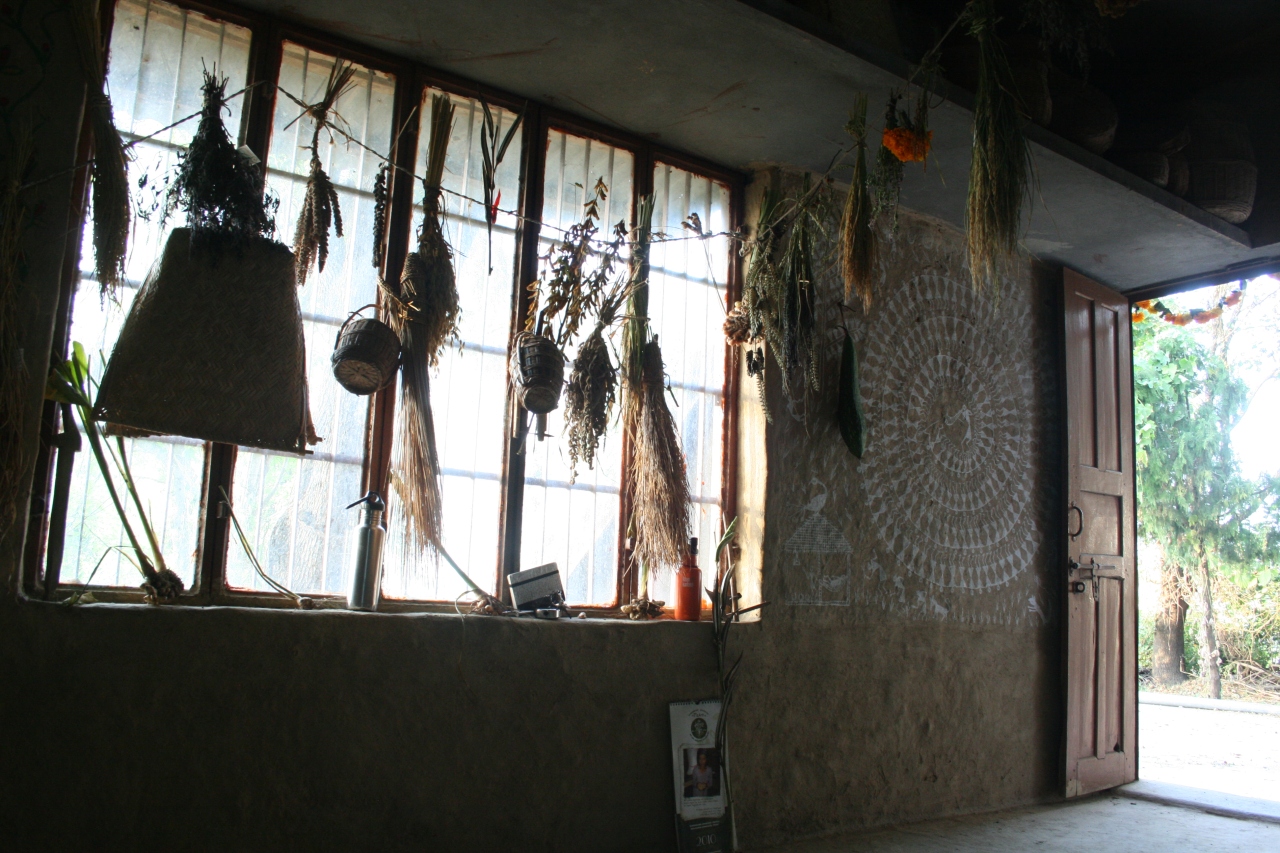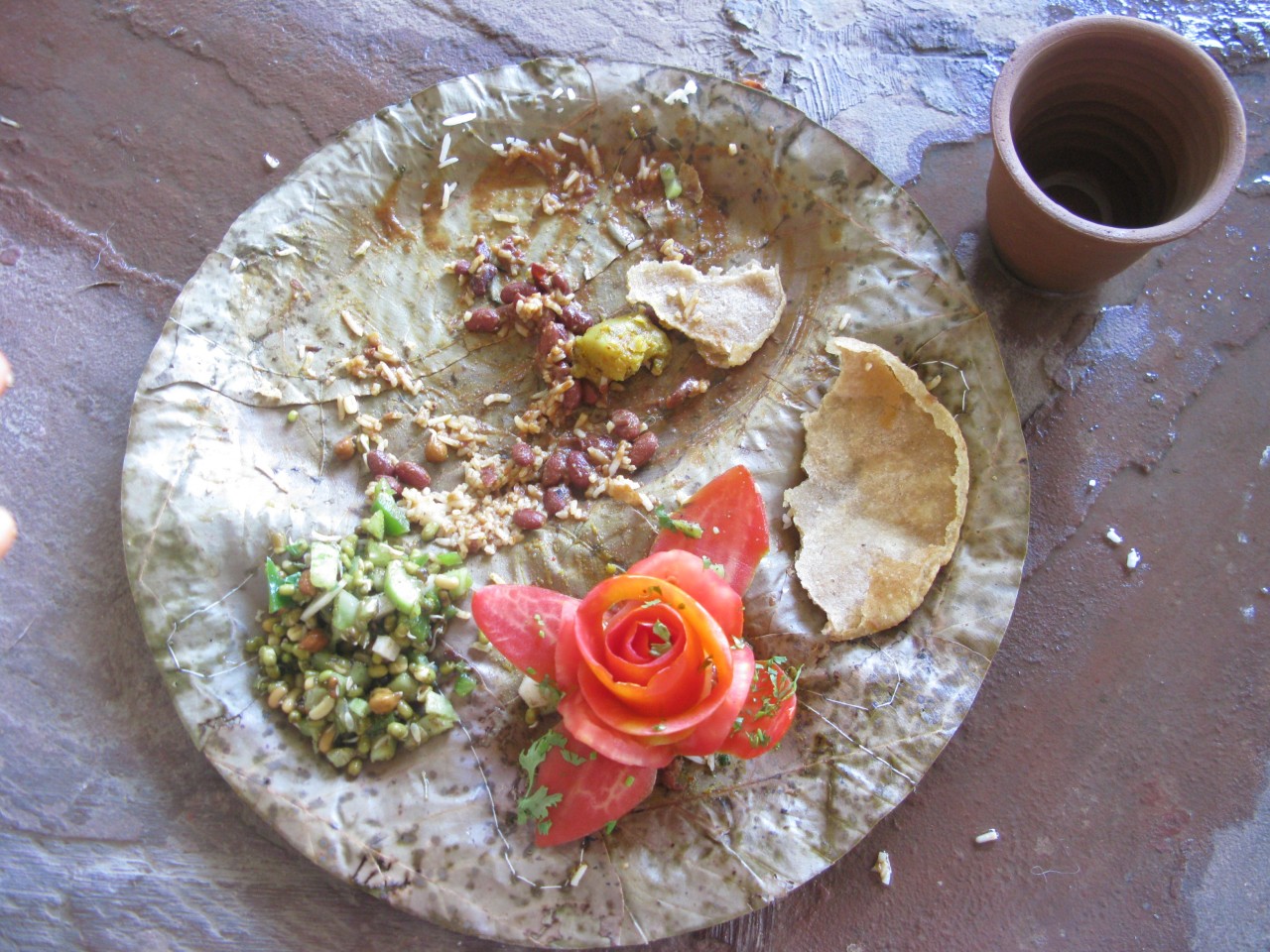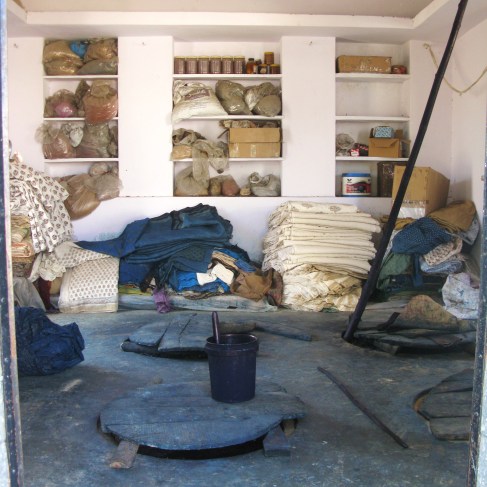Along one of the lush pathways on the Navdanya Biodiversity Conservation Farm, we sat down with Dr. Vandana Shiva to discuss the effects of globalization on small, organic farmers and traditional artisans around the world. Dr. Shiva gave us some great examples of the connections between the slow food and slow fashion movements and elaborates …
India
Navdanya Biodiversity Conservation Farm
What is Navdanya exactly?
A multitude of things: an NGO, a research center, a school, a restaurant, a shop, an organic biodiversity conservation farm, a model, a gathering place, a skill-share, a community.
During our visit to the Biodiversity Conservation Farm, we had the chance to experience Navdanya as the latter: a gathering place, skill-share, and overall community.
Upon our arrival, we stumbled into the middle of Vasundhara 2012, the silver jubilee celebrating 25 years of the ‘Navdanya movement ‘under leadership of Dr. Vandana Shiva. 200 farmers from all across India attended the gathering, along with Dr. Harak Singh Rawat, Agriculture Minister of Uttarakhand, and Jackie Shroff, Bollywood film actor who will be an Ambassador of Farmers for Organic India. Other representatives from organic companies and movements around the world were present for the conference as well, including Amy’s Organics from California and Isis Noor Yalagi, head of the Jeunesse Enfance Development Environment in Benin. The two-day gathering was, for us, a wonderful introduction to the organization, allowing us to see how far and wide their work has spread.
The 47 acre farm not only produces crops like turmeric and millet to sell at the Navdanya shops in Delhi and Mumbai, but also uses their land for organic experimentation and conservation purposes.
The experimentation field is used to test the effects of a variety of natural fertilizers like vermis wash and CPP (cow pat pit, while also demonstrating the capabilities of multi-cropping to visiting farmers, educating them about the importance of cultivating diverse farmland. If one crop fails, there will always be another to fall back on, therefore, ensuring an income for the farmer. Each crop provides different nutritional elements to the soil and to each other, strengthening the overall performance of the farm.
The conservation field is used to conserve the multitude of seed varieties that have been under genocide, facing extinction due to GMO monocultures imposed on farmers around the world by corporate giants like Monsanto and RiceTex. Navdanya conserves more than 600 varieties of rice by re-planting each one every year in its own 6×8 plot, so that they can continue to adapt to climate changes. The organization advises all farmers to re-plant all of their seeds each year as a way to not only protect the earth’s diversity, but also to protect their own freedom.
The farm also demonstrates and advocates natural pest control methods to other farmers, helping them to veer away from false projections given by pesticide companies. Instead of contaminating one’s farm with harmful chemicals, planting marigolds, camphor trees or neem trees throughout the farm is a an effective method that dates back centuries.
One of the most important aspects of the farm is the Seed Bank. Being the pioneers of seed saving, Navdanya has created a model Seed Bank for other farmers to come and learn how to start one in their community or even in their own home. The organization teaches farmers how to properly dry and store their seeds to ensure adequate germination for the following planting season. Navdanya has helped to create 65 seed banks in 16 states across India, resulting in the successful conservation of more than 2,000 rice varieties, 31 wheat varieties, and hundreds of other cereals, vegetables, oilseeds, and multipurpose plants. They also offer free seeds to farmers, having them agree to either give back some to Navdanya the following year or pass them on to at least two other farmers. Our visit took place right at the start of the harvest, allowing us to experience the stages of saving a seed. We participated in an activity called ‘rice thrashing’ – just as it sounds, cutting down the ready-to-harvest rice. As we harvested each rice variety, they were then bundled, labeled and carried off to a large, outdoor stone floor space to be laid out to dry in the sun. Once ready, a small selection of seeds from each variety is carefully chosen to be stored in the seed bank – proper containers, such as bamboo and cow dung baskets or tightly sealed glass jars are essential to keeping the seeds in good condition for the year. We also had the opportunity to chat with Navdanya’s seed keeper, Bija Didi. Details on our conversation with her will come in our next post!
In having such wonderfully nutritious meals on the farm and learning about the recipes, we took note of the use of onions and turmeric, reminding us of our natural dyeing skills. We then decided to offer a skill-share to the Navdanya community – we conducted a natural dyeing workshop using leftover onion skins and turmeric from our meals, having each person bring an item of white clothing that they would want to dye. It felt great to be exercising our love for creating natural dyes and sharing it with a group of volunteers, interns and staff who have environmental interests. In turn, we also gained skills in bread making, vegetarian Indian cooking and fermenting cabbage and chili.
Our experience at the Biodiversity Conservation Farm not only strengthened our knowledge in organic farming and seed saving, but also in community building and collaborative cooperation. Thank you to all of the Navdanya staff, interns and volunteers who helped to give us such an inspiring and educational visit!
Athina, Bella & Kiyoye
From Gujarat we headed to Rajasthan to visit a community of block printers located in Bagru village, just outside of Jaipur. The Chhipa community has practiced their tradition for roughly 450 years, passing their skills onto generations of artisans.
After peeking into the block printing studio, we sat down with Ram Kishore Chhipa Derawala, the owner of the block printing business, and asked him some important questions about his craft. He spoke about the effects of colonialism on their traditions and explained that there was a time when they only used natural dyes to make their clothing. During British rule, however, chemical dyes were introduced, as the British profited more from them. Unfortunately, this capitalist model of ‘cheaper, faster, easier’ production not only compromised the quality of their products, but also disregarded environmental concerns.
Evidently, a primary characteristic of colonialism is the control of resources and people. Thus, when the British took over the textile and the farming industries in India, they were inevitably undermining the livelihoods of India’s people. Traditionally, the Chhipa village used left-over food scraps, such as onion skins and pomegranate rind, to make different colours of dye. Naturally, therefore, they began re-introducing organic ingredients once the British left, and are currently producing 65% of their clothing with natural dyes.
The benefits of using organic materials are fairly straightforward. From a health perspective, consumers evade harmful, carcinogenic chemicals seeping into the skin. On an ecological level, the Earth is spared from the same dangers that chemicals cause humans, as the water rinsed from freshly dyed clothing gets absorbed into the ground and contaminates water.
Ram Kishore also got into the business-side of things and addressed how they have to adapt to new market trends and renew their designs every year. This not only keeps things fresh, but it also makes it harder for their designs to be copied and re-sold for cheaper prices—a problem familiar to designers worldwide. Regardless, their traditions are maintained and their prints are exclusive to their region.
Some of their products are sold at Fabindia, a company that sells “products that are made from traditional techniques, skills and hand-based processes.” Fabindia supports over 80,000 craft-based rural producers and links them to modern urban markets, thereby sustaining rural employment and preserving India’s tradition of handicraft. If you want to know more about Fabindia, check out their site:
http://www.fabindia.com/. They also sell products from Anokhi and Kala Raksha! And check out the block printing business at: http://www.rkderawala.com/
Until next time!
Kiyoye, Bella and Athina
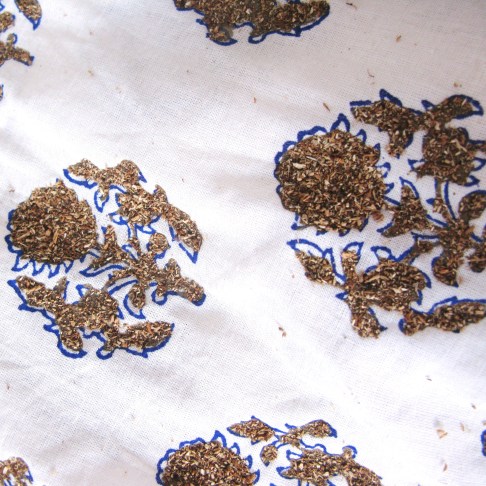
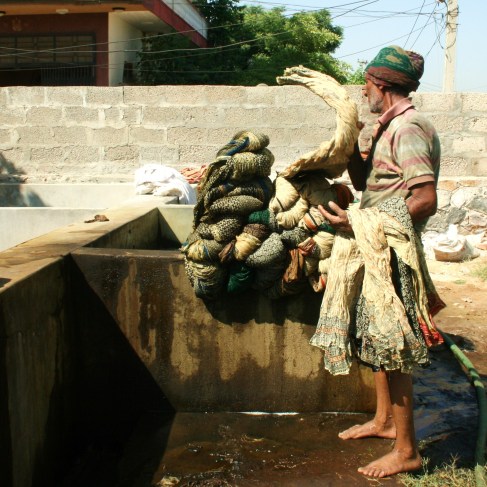
After the first three days at the Kala Raksha Sumrasar location, we were picked up by Judy Frater, founder of Kala Raksha, and driven off to their Vidhyalaya (Artisan Design School). Judy was extremely welcoming and on the ride over gave us an in-depth description of how the organization came into fruition in ’93 and …
We have just arrived in Jaipur after our 10 day visit to Kala Raksha — an organization dedicated to the preservation of traditional, hand embroidery work in the desert region of Kutch. We spent most of our time at the main location in the village of Sumrasar, 25 km north of the main city of …
The highlight of our visit to New Delhi was the delicious and nutritious lunch we enjoyed at the Navdanya Slow Food Café. Located in the quaint, outdoor artisan bazaar, Dilli Haat, the café offers a shaded, comfortable space along with a health-wise, organic menu. The small eatery emulates the whole Navdanya philosophy. The glass table …


